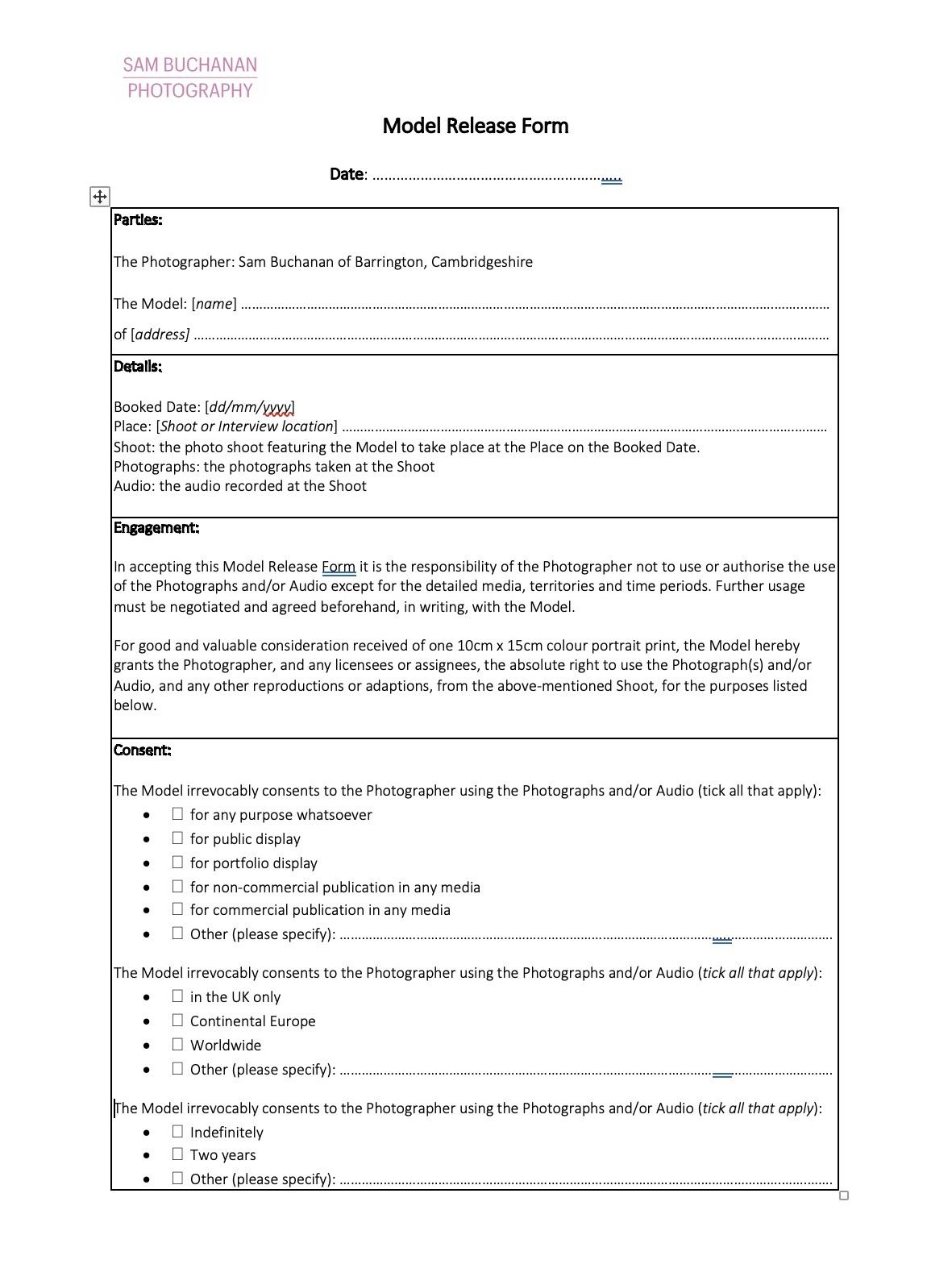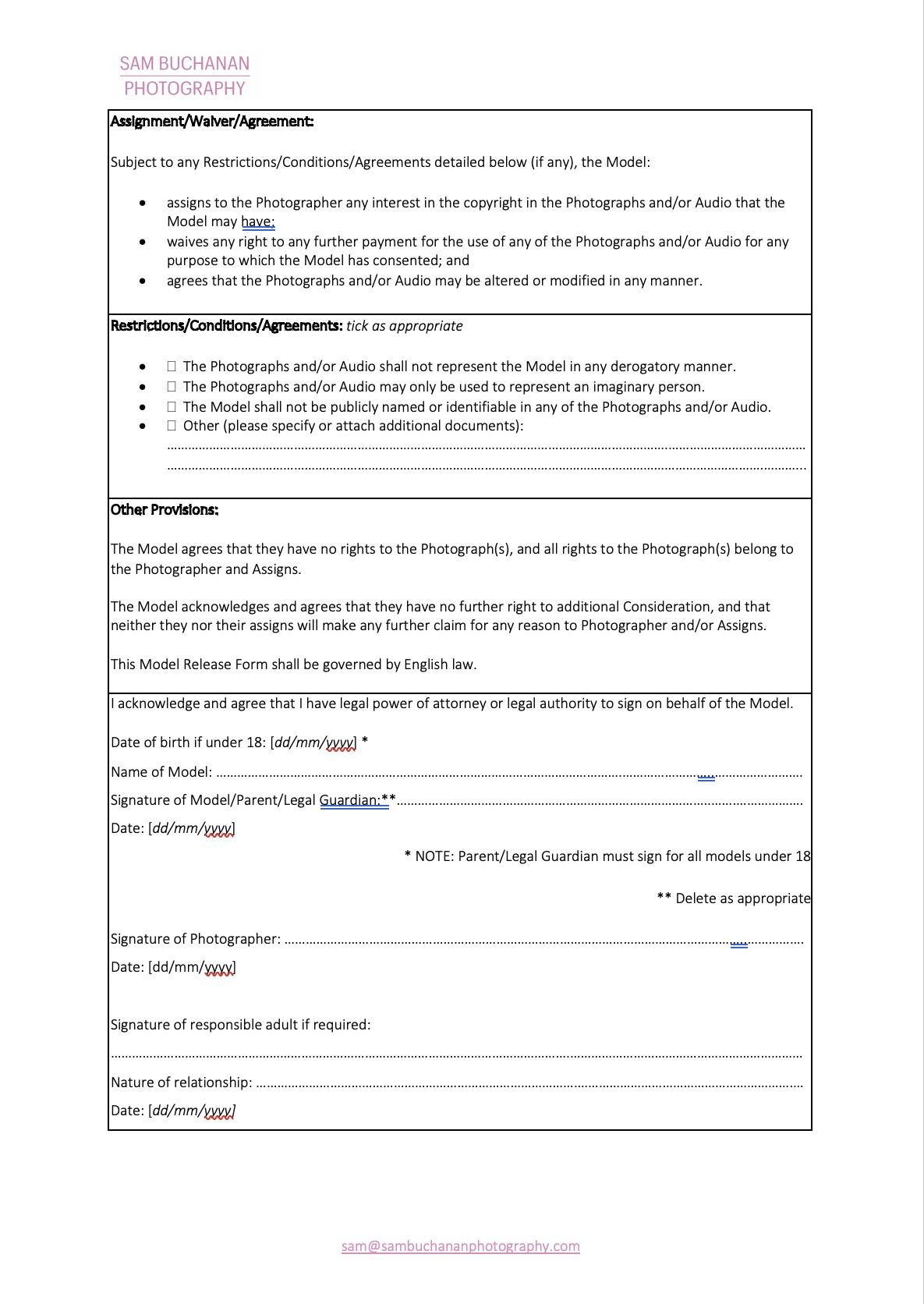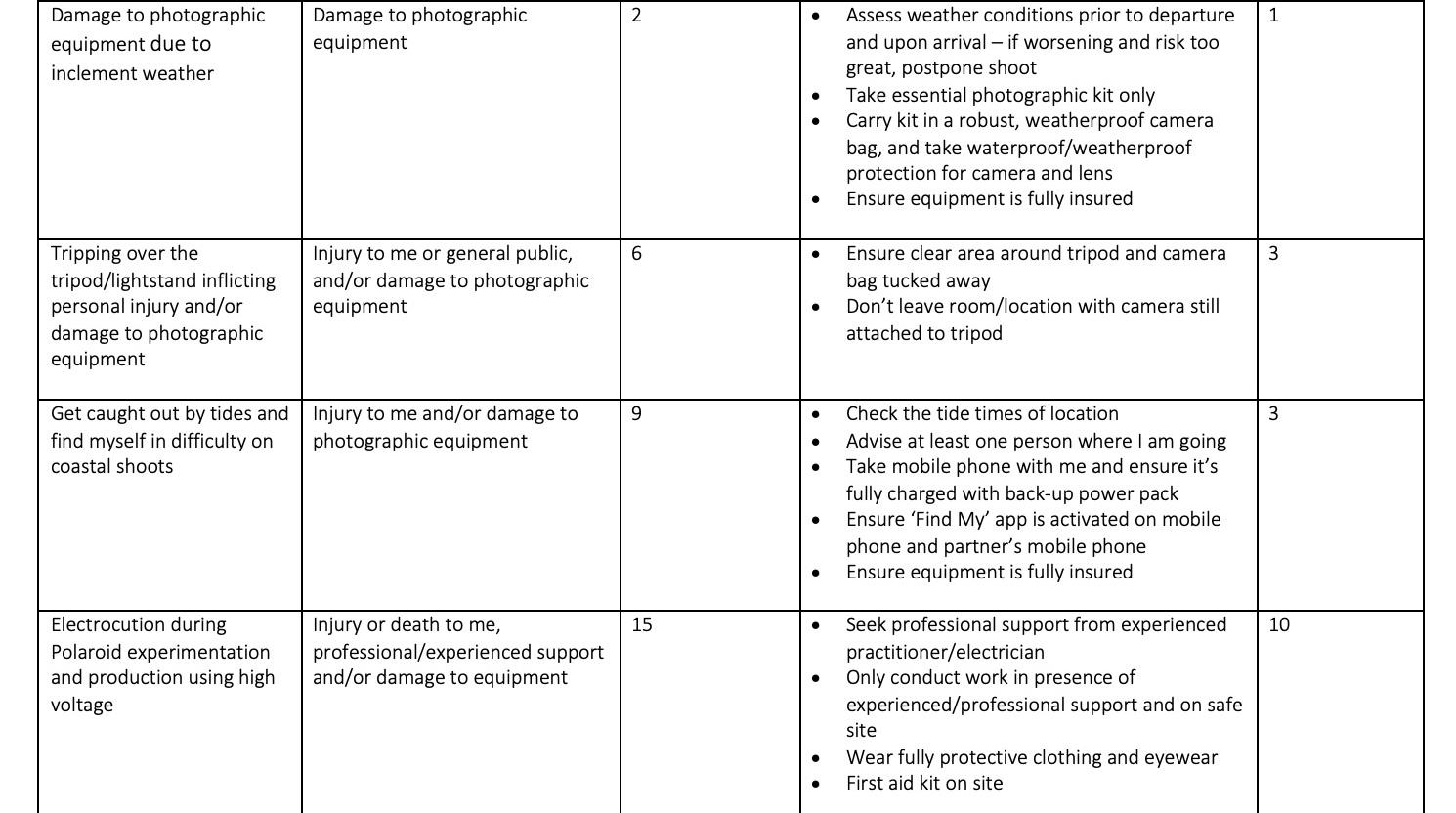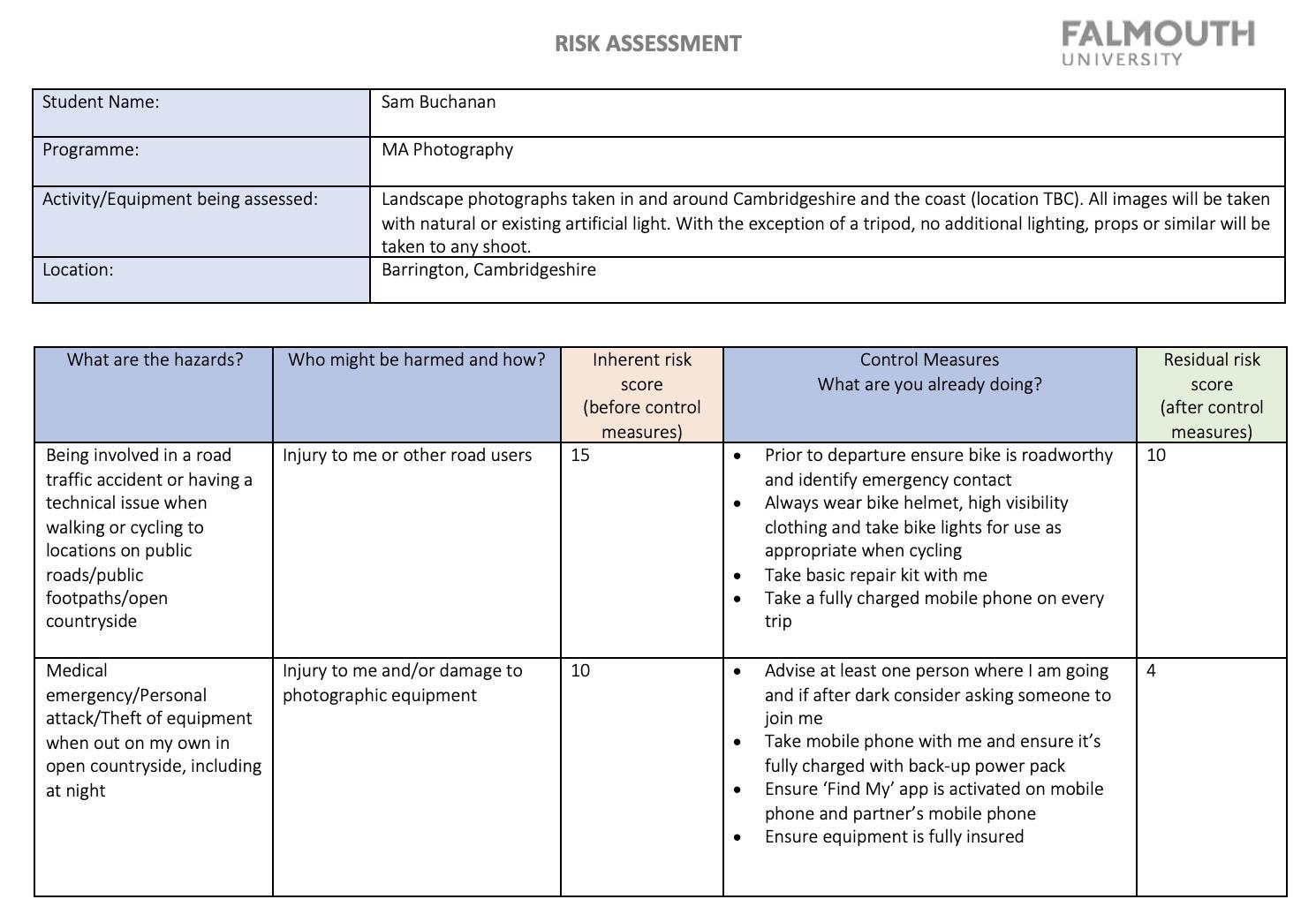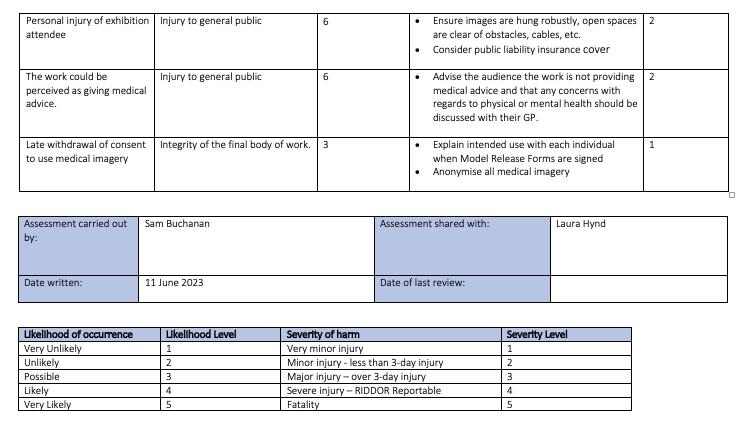DESCENT | Sam Buchanan
Final Major Project Proposal
PHO750
MA Photography
“…with all his noble qualities...with all these exalted powers, Man still bears his bodily frame with the indelible stamp of his lowly origin.”
Charles Darwin
Final Major Project Proposal
PHO750
MA Photography
“…with all his noble qualities...with all these exalted powers, Man still bears his bodily frame with the indelible stamp of his lowly origin.”
Charles DarwinWith its origins firmly based on my own experience of Burn-out1, my Final Major Project will explore the wider impact of modern life on the human body.
The first identifiably human species first walked the planet some 2 million years ago. Since then, several species of humans have emerged, disappeared or converged, until about 200,000 years ago when modern humans, Homo sapiens, appeared. Their success? They were sufficiently adapted to survive the harsh climatic changes of the Pleistocene and Holocene Epochs. As we await the declaration of a new human-driven Epoch, the speed at which these seismic man-made changes have occurred means the very thing that secured our ascent up the evolutionary ladder, our adaptability, is not fast enough to accommodate the challenges modern life is demanding of us.
Our bodies are simply not meant to experience life in this way and they are “defending and deforming themselves in response” (Cregan-Reid, 2004: 18). Many of the risk factors, such as physical inactivity and poor sleep, are behavioural and thus modifiable, but these are the very things modern life insidiously promotes.
1 In 2019 the World Health Organisation (WHO) defined ‘Burn-out’ as: “a syndrome conceptualized as resulting from chronic workplace stress that has not been successfully managed.” A global benchmark for diagnosis and health insurers, burn-out was characterised in the WHO’s International Classification of Diseases by three dimensions: 1. Feelings of exhaustion;2. Increased mental distance from or feelings of cynicism related to one’s job; and 3. A sense of ineffectiveness and lack of accomplishment. (World Health Organisation 2022)
“The feotal heartbeat was distinct, fluttering like a bird over the oceanic swell of the mother’s pulse”
(Francis 2016: 90)

The impact of modern life is a complex area of human health, and one with some startling statistics:
Globally between 2020 and 2030 physical inactivity will result in almost 500 million new cases of preventable non-communicable diseases1 (NCDs) and mental health conditions. (World Health Organisation 2022)
Human sperm counts have halved in the past 50 years. A change occurring so universally and rapidly, it cannot have a genetic evolutionary basis but rather must be environmentally induced. (Aitken 2022)
Encompassing both causes and effects, the initial themes I will consider include:
• Inactivity
• Diet
• Stress
• Joy
• Fertility
• Sleep
• Time
1 Noncommunicable diseases (NCDs), also known as chronic diseases, tend to be of long duration and are the result of a combination of genetic, physiological, environmental and behavioural factors. The main types of NCD are cardiovascular diseases (such as heart attacks and stroke), cancers, chronic respiratory diseases (such as chronic obstructive pulmonary disease and asthma) and diabetes.
A thematic approach is helpful in providing some structure as I commence this work. I do, however, recognise that the themes and impacts are inter-related and should not be viewed in isolation.
Whilst this project is autobiographically inspired, my research will take a more objective approach. By extending my research beyond my own personal experience, I aim to produce a broader, more inclusive body of work for a diverse audience.

At its heart, this work is a fusion of art and science. It is critical those scientific foundations are from reputable sources. The World Health Organisation and Wellcome are two such examples. I will also employ publicly available evidencebased research and the support of medical and scientific professionals. As I explore the science in the context of photography, organisations such as the Too Tired Project, the Arts & Health Hub, and podcasts such as The Long Time Academy are content-rich resources.
Helping to navigate the medical and anthropological science, authors such as Dr Gavin Francis and Vybarr Cregan-Reid are proving invaluable, whilst the likes of Leonardo da Vinci, Jane Austin and Ovid’s Metamorphoses are informing early image ideas.
Rinko Kawauchi’s imagery, and its ability to connect to our collective unconscious (Takazawa 2016), has provided initial inspiration for the visual language. Their often delicate fragility convey the beauty of her subject whilst revealing a sinister undertone (Parr 2004) and it’s this juxtaposition I’m keen to explore. Similarly, I’m drawn to Richard Misrach’s work, who writes “beauty can be a very powerful conveyor of difficult ideas....it engages people when they might otherwise look away.” (Misrach 2020: 86). Misrach’s use of blue water barrels in Fig.4 to signify the emotionally-charged migrant crisis at the US/Mexican border makes a compelling and moving image.


Elena Brotherus’ Carpe Fucking Diem, Lisa Graves’ between breaths and Laura Marsh’s Occulta have brought visibility to the invisible. As I look to do the same for the many invisible impacts, medical imagery is one option. The rarity with which we see those (Orton 2018) and the concept of the medical gaze could be a key driver in generating audience discussion. At risk of looking beyond the scope of this work, I’m also drawn to Helen Sear’s Composities, which combines “multiple images to emphasis the indivisibility of the human and the natural worlds.” (Centre for British Photography 2023).
The main body of the work will be taken digitally, but there are impacts at a cellular level that I’d like to represent differently. Naomi James’ Lockdown Decay and Phillip Stearns’ High Voltage Images convey an intriguing visual quality.

Employing Polaroids differently, they both introduce an element of chance into the final image; an analogy for cell division I’m keen to use. Such images will be an entirely new venture and one requiring experimentation in order to produce something visually compelling. Rhiannon Adam’s Polaroids: The Missing Manual will guide early tests, whilst Naomi James has been kind enough to offer advice as I embark on this phase.
More personally challenging is the inclusion of text; something I’ve not done before. Although apprehensive, I think it’s an important element to complete the work. I envisage the images being accompanied by insight into my narrative and the health impacts each image represents. Quite how I blend images and text is currently undecided. The tension created by Anna Fox in My Mother’s Cupboards and My Father’s Words is very powerful. Conversely, the separation of text and image using, for example, an accompanying catalogue allows for an

initial reading of the image without any additional context. Although not created for an exhibition but as part of a photobook, I was struck by the use of text by Rhiannon Adam in Big Fence/Pitcairn Island. The potential to include an essay further complicates the decision but may support the longevity of the work after the exhibtion’s culmination.
How these series of images and text work together will emerge over the coming weeks, and the editing and sequencing of the final set will be a critical part of that success.


My intended audience are those with an interest, professionally or personally, in physical and mental health. This may include those suffering from or supporting those with health conditions and those working in the healthcare professions. Other avenues to expand the audience, and encourage people to connect more deeply with how lifestyle choices impact human health, will be explored as the project progresses.
How my audience encounters the work will be critical. I view the outcome of this work as an exhibition, an opportunity to encourage people to view and discuss the work together. The subject matter and my desire to democratise the work leads me to consider a publicly accessible exhibition, possibly held outdoors locally in Cambridge. November can, however, present some challenging weather conditions so other options will be explored. Decisions around printing, etc. will be made once the nature of the final body of work and exhibition location is more settled.
I will use personal invitations and Instagram to publicise the work and exhibition, and create an online gallery within my existing website.

The key activities for the production of this work can be broadly grouped into three main phases:
1. Preparatory (weeks 1-8) - will encompass a blend of experimental imagemaking, visual and theoretical research, culminating in the refinement of the project’s concept, themes and methodology.
2. Production (weeks 9 to 19) - will comprise more focused image-making and research to underpin the work, writing, early editing and sequencing experimentation and the commencement of activities to support the final phase and delivery of the work to the public, including finalising venue, design support and printers.
3. Delivery (weeks 20 to 29) - will focus on finalising the images, including editing and sequencing decisions, the submission of images and catalogue for printing, website and social media updates, public dissemination of the work and the completion and submission of final assignments.
Straddling all phases will be regular CRJ updates, and peer-to-peer and tutor sessions to discuss and support the development of the work.
I find a weekly tracker helpful in managing activities and progress, and will maintain one throughout the project (see Appendix 1). I expect some activities and timings to be adjusted as the project evolves.
Whilst Descent does not have an overtly ecological theme, the Industrial Revolution’s colossal influence on our bodies and human health was also a turning point for the planet’s health. As detailed in my Impact Assessment Plan, I will make every effort to use and support environmentally sustainable practices in the production of this work.
The UN’s Sustainable Development Goal of ensuring healthy lives and the promotion of well-being has been severely hindered. The scale of the human health crisis is almost unimaginable. The economic burden of physical inactivity alone is huge, with the cost of treating just the new cases of NCD’s totalling over £21 billion annually (WHO 2022). Modern life is simply not sustainable. If this work contributes to the conversation about human health I will deem it to have been a success.
Supporting my practice beyond the MA, I will apply for opportunties to disseminate my work more widely and mentoring support as I position myself professionally. The Arts & Health Hub, for example, run programmes specifically aimed at early-career artists exploring health in their practice. Whilst I recognise the challenges of the Photobook community (Johnston 2021), I would ultimately like to produce a photobook, perhaps one with a dual narrative, drawing on the inextricable link between human health and that of the planet’s. There is a plethora of resources supporting environmentally conscious bookmaking on which I’ll draw, including The Sustainable Photobook Publishing network.
As an AOP member, I will continue to abide by the Code of Practice in the making and dissemination of this work (Association of Photographers 2021).
As an inital exploratory phase examining the potential use of medical imagery, I will seek assistance from Consultant Radiologist Dr Laurence Berman. If I proceed, individual consent from subjects will be secured using a Model Release Form (adapted from the template shown in Appendix 3), with full details of intended use provided in advance, and all images anonymised.
The proposed use of a Polaroid camera causes me to pause. Both the camera and film have an ecological footprint (Nyugen. 2023). If adopted, I will seek to minimise the impact. For example, in employing the decaying process, I will only use saline solution, with the resulting liquid, containing film chemicals, bottled, labelled and deposited at my local recycling centre.
Whilst digital is seen as less damaging than analogue, it is far from without environmental impact. To minimise further impact, with the exception of a Polaroid camera and consumables (paper, ink, Polaroid film), I will complete this project without purchasing additional kit. Anything I do find I need will be borrowed or rented. Data will be stored locally on existing hard drives as opposed to cloud storage. Paper will be sourced from FSC-certified sources,
with paper waste disposed of for recycling and empty ink tanks returned to Canon for recycling.
See Appendix 2 for equipment manufacturers environmental pledges and plans.
Energy
Electricity is from 100% renewable sources and all cameras and external lights use rechargeable batteries.
With the exception of coastal shoots, I expect all images to be taken within walking or cycling distance of home. Any coastal trips will be combined with other purposes, such as family holidays. The Wellcome Collection, and London galleries and museums are easily accessible by train.
For exhibition prints and catalogue, I will seek to use local, environmentally responsible practices, including certified carbon balanced printers, using lightfast paper.

BUCHANAN, Sam. 2023. Untitled image.
BUCHANAN, Sam. 2023. Untitled blended image.
KAWAUCHI, Rinko. Undated. Untitled image from Utatane. Available at: https://rinkokawauchi.com/en/works/284/ [accessed 2 June 2023].
MISRACH, Richard. 2014. Agua #3, near Calexico, California.
Available at: https://www.artsy.net/artwork/richard-misrach-aguanumber-1-near-calexico-california-slash-agua-no-1-cerca-de-calexicocalifornia [accessed 11 June 2023].
JAMES, Naomi. 2020. Untitled image from Lockdown Decay
Available at: https://www.naomi-james.co.uk/lockdown-decay/ [accessed 12 June 2023].
STEARNS, Phillip. Undated. Untitled image from High Voltage Images. Available at: https://phillipstearns.com/artwork#/highvoltage-images/[accessed 6 June 2023].
FOX, Anna. 1999. My Mother’s Cupboards and My Father’s Words
(10). Available at: https://annafox.co.uk/photography/my-motherscupboards-and-my-fathers-words/ [accessed 12 June 2023].
ADAM, Rhiannon. Undated. Spread from Big Fence/Pitcairn Island. Available at: http://lenscratch.com/2022/06/rhiannon-adam-bigfencepitcairn-island/ [accessed 12 June 2023].
BUCHANAN, Sam. 2022. Untitled image.
BUCHANAN, Sam. 2023. Untitled image.
ADAM, Rhiannon. 2022. Big Fence/Pitcairn Island. London: Blow Up Press.
AITKEN, R John. 2022. The changing tide of human fertility, Human Reproduction, Volume 37, Issue 4, April 2022, Pages 629–638, https://doi. org/10.1093/humrep/deac011 [accessed 11 June 2023].
ARTS & HEALTH HUB. Undated. Arts & Health Hub [online]. Available at: https:// www.artsandhealthhub.org [accessed 2 June 2023].
ASSOCIATION OF PHOTOGRAPHERS. 2021. AOP Code of Practice 2021 [online]. Available at: https://www.the-aop.org/uploads/aop-code-ofpractice-2021.pdf[accessed 6 June 2023].
AUSTIN, Jane. 2003. Emma (1816). 3rd edition. London:Penguin Classics
BROTHERUS, Elina. 2011-2015. Carpe Fucking Diem (2011-2015) [online]. Available at: https://www.elinabrotherus.com/photography#/carpe-fuckingdiem/ [accessed 6 June 2023].
BRYSON, Bill. 2019. The Body - A Guide for Occupants [Kindle edition]. Transworld Digital. Available from Amazon.
CENTRE FOR BRITISH PHOTOGRAPHY, Undated. Helen Sear. Available at: https://britishphotography.org/exhibitions/57-helen-sear/ [accessed 9 June 2023].
CLAYTON, Martin and PHILO, Ron. 2012. Leonardo da Vinci Anatomist. Royal Collection Trust.
COOKSON, Clive. 2018. Only human, after all: how evolution left us illequipped for modernity, Financial Times. Available at: https://www.ft.com/ content/0df23354-8c2f-11e8-b18d-0181731a0340 [accessed 2 June 2023].
CREGAN-REID, Vybarr. 2018. Primate Change: How the World We Made is Remaking Us [Kindle edition]. London: Cassell. Available from Amazon.
DARWIN, Charles. 2016. The Descent of Man, and Selection in Relation to Sex (1871) [Kindle edition]. 2nd edition. Anboco. Available from Amazon.
FOX Anna. 1999. My Mother’s Cupboards and My Father’s Words. Available at: https://annafox.co.uk/publications/my-mothers-cupboards-and-my-fatherswords/ [first seen at the Centre for British Photography 3 May 2023].
FRANCIS, Gavin. 2016. Adventures in Human Being. London: Wellcome Collection.
FRANCIS, Gavin. 2019. Shapeshifters: A Doctor’s Notes on Medicine & Human Change. London: Wellcome Collection.
GRAVES, Lisa. Undated. Lisa Graves: between breaths [online]. Available at: https://lisavgraves.myportfolio.com/between-breaths [accessed 2 June 2023].
JAMES, Naomi. 2023. Evening presentation with J Nash. Hosted on Zoom. 14 May 2023.
JAMES, Naomi. 2020. Lockdown Decay [online]. Available at: https://www. naomi-james.co.uk/lockdown-decay [accessed 12 June 2023].
JOHNSTON, Matt. 2021. Photobooks & - A critical companion to the contemporary medium. London: Onomatopee 220.
MARSH, Laura. 2022. Occulta [online]. Available at: https://lauramarshphoto. wixsite.com/portfolio/featured-project [accessed 2 June 2023].
MISRACH, Richard. 2020. Richard Misrach on Landscape and Meaning: The Photography Workshop Series. New York, USA: Aperture.
NYUGEN, Crystal. 2023. The Life Cycle of Polaroids Design Life-Cycle. Available at: http://www.designlife-cycle.com/polaroid-film [accessed 10 June 2023].
ORTON, Liz. 2018. Becoming Image: Medicine and the Algorithmic Gaze London: Digital Insides.
OVID. 2004. Metamorphoses [Kindle edition]. London:Penguin. Available from Amazon.
PARR, Martin. 2004. Big in Japan, British Journal of Photography. 10.11. p23. Available at: http://rinkokawauchi.com/en/wp-content/uploads/ sites/2/2017/12/2004_British-Journal-of-Photography.pdf [accessed 6 June 2023].
SACKS, Oliver. 2015. On The Move. London: Picador. STEARNS, Phillip David. Undated. Phillip David Stearns [online]. Available at: https://phillipstearns.com/artwork#/high-voltage-images/ [accessed 6 June 2023].
SUTTON, Jeremy. 2019. Why Our Minds and Bodies No Longer Fit the World in Which We Live?, Medium. Available at: https://medium.com/swlh/why-ourminds-and-bodies-no-longer-fit-the-world-in-which-we-live-3505315ef8b3 [accessed 2 June 2023].
TAKAZAWA, Kenji. 2016. Photographs as a medium for the memories of strangers. Gallery-16. Available at: http:// rinkokawauchi.com/en/wp-content/ uploads/sites/2/2017/12/2016_Gallery-916.pdf [accessed 7 March 2023].
THE LONG TIME ACADEMY. Undated. The Long Time Academy [online]. Available at: https://www.thelongtimeacademy.com/about[accessed 2 JUne 2023].
TOO TIRED PROJECT. Undated. Too Tired Project [online]. Available at: https:// tootiredproject.com[accessed 2 June 2023].
UNITED NATIONS. Undated. United Nations Sustainable Development Goals. Available at: https://www.un.org/sustainabledevelopment/sustainabledevelopment-goals/ [accessed 11 June 2023].
WELLS, Liz. Undated. ‘Beyond the Exhibition - from Catalogue to Photobook’. In Patrizia DI BELLO, Collette WILSON and Shaman ZAMIR (ed.) The Photobook:
From Talbot to Ruscha and Beyond. London: Routledge, 129-144.
WORLD HEALTH ORGANISATION. 2022. ICD-11 for Mortality and Morbidity Statistics [online]. Available at: https://icd.who.int/browse11/l-m/en#/ http%3a%2f%2fid.who.int%2ficd%2fenti- ty%2f129180281 [accessed 6 November 2022].
WORLD HEALTH ORGANISATION. 2022. Global Status Report on Physical Activity 2022 [online]. Available at: https://www.who.int/publications/i/ item/9789240059153 [accessed 6 June 2023].
Appendix 1 Activities Tracker
Appendix 2 Manufacturer Pledges and Plans
Appendix 3 Model Release Form Template
Appendix 4 Risk Assessment


Fujifilm - cameras
Fuji has expressed its aim to reduce CO2 emissions by 50% by 2030 across its entire product life cycle and operations, as well as convert 50% of its operational power usage to renewable resources with a 0% emissions target for 2040. They have also pledged to reduce water consumption and waste by 30%. Full details are available at: https://global.fujifilm.com/en/about/sustainability.
Polaroid - camera and film
Their Social Responsibility information is only available to US-based website visitors. Packaging on new cameras indicate 40% is made from recycled materials and a 2023 paper discusses the environmental impact of Polaroid film (available at: http://www.designlife-cycle.com/polaroid-film).
Apple - iPhone/iPad/Mac
100% carbon neutral across all their corporate operations since April 2020, Apple pledge to make every product carbon neutral by 2030. Their ‘Environmental Progress Report 2023’ is available at https://www.apple.com/ environment/pdf/Apple_Environmental_Progress_Report_2023.pdf.
Urth - lens filters
A B-corp certified business, their ethical values and environmental work is detailed at: https://uk.urth.co/pages/positive-impact.
A small, 8-person company based locally, they have no environmental or sustainability credentials on their website. However, in previous email correspondence, they confirmed by using their size and associated agility, they make pragmatic decisions that minimise their impact on the environment, including using ocean vessels for transportation where possible, designing products that can be repaired and selling spare parts.
A little more opaque than many comparable companies in their sustainability targets, their Sustainability Report 2023 and additional information can be found at: https://global.canon/en/environment/.
